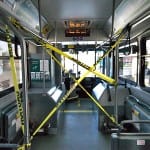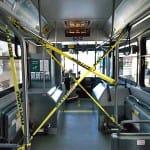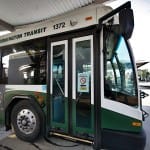Bloomington Transit board likely to put off decision on new routes, delay implementation until January 2021



At its next scheduled board meeting on April 21, the Bloomington Transit (BT) board is likely to postpone a decision on new routes for the public transit agency, which were originally planned for implementation in August of this year.
The staff’s recommended postponement is based on the impact of the COVID-19 public health emergency.
The reason was described in a Friday email message to transit advocates from Zac Huneck, BT’s planning and special projects manager: “We believe introducing major service changes would add an unnecessary burden to our already strained operations.”
Heck’s email message said staff are looking at January 2021 for starting service on the newly designed routes, which are meant to increase ridership by increasing frequency and on-time performance, while maintaining about the same number of service hours.
The board’s meeting, starting at 5:30 p.m on April 21, is planned to be held on Zoom, the video-conferencing platform, and will be live streamed on Facebook, according to Huneck’s message. People who want a link to the Zoom meeting can send an email to Huneck, requesting it: huneckz at bloomingtontransit.com
The route optimization proposal is based on a consultant’s study done last year and was presented to the public at meetings held last year in November and December. Based on the public’s feedback, BT staff recommended adjustments to the proposed route configuration.
The route optimization plan had appeared on the cancelled March board meeting agenda.
For the last couple of weeks during the COVID-19 public health emergency, BT operations have been reduced to the Saturday schedule for most routes with a couple of exceptions.
Among the measures being implemented by BT are nightly disinfection of the buses with electrostatic cleaning equipment.
Passengers are also pointed to the rear doors for entry and separated with yellow caution tape from the front of the bus where the driver sits. The need to get access to the fare box at the front of the bus has been eliminated by a waiver of fares for the duration of the health emergency.
Ridership on BT fixed route buses is about 10 percent of levels seen this time last year.
Federal and state reimbursements to local public transit agencies generally depend on ridership. In the recently enacted Coronavirus Aid, Relief, and Economic Security (CARES) Act, money is available to public transit agencies to help them cover expenses related to the impact of COVID-19.
According to the Federal Transit Administration, the $25 billion in CARES Act transit funding will cover operating expenses since the third week in January that go towards maintaining transit services. CARES Act money can also pay for administrative leave for transit workers, due to reduced operations during an emergency, according to the FTA.





Comments ()